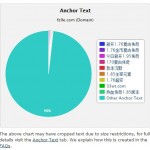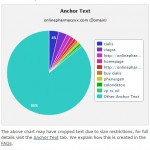You’ve sifted through a large list, filtered by your preferred metrics, and found a promising collection of expired domains available for registration—perfect candidates for your Private Blog Network (PBN). Fantastic!
However, before you hit the “purchase” button, you must perform a critical step: examining the backlink profile for signs of spam or manipulation. Buying a domain with a history of fake or low-quality backlinks can severely harm your PBN and any site you link it to.
Today we will outlines four simple checks you can perform using a free account from Majestic (or similar SEO analysis tools).
Step 1: Initial Analysis with Majestic
Begin by using an SEO analysis tool like Majestic.
- Enter the Domain: Put the expired domain name into the Majestic search box.
- Analyze Core Metrics: Focus immediately on the main flow metrics: Trust Flow (TF) and Citation Flow (CF).
Check 1: Trust Flow vs. Citation Flow Discrepancy
Trust Flow (TF) measures the quality of the links pointing to the domain, based on “trusted” seed sites. Citation Flow (CF) measures the quantity or influence of the links.
- What to Look For: A healthy domain will have TF and CF numbers that are similar to each other, or a TF that is a significant proportion of the CF (e.g., TF: 30, CF: 40).
- Sign of Fake Backlinks: If the Citation Flow is significantly higher than the Trust Flow (e.g., TF: 5, CF: 45), this is a major red flag.
A high CF/low TF ratio suggests the domain has a large number of low-quality, spammy, or easy-to-acquire links, which inflate the CF but provide little to no trust value. This is a classic indicator of a manipulated link profile.
In the above image, you might see the Citation Flow is way larger than the Trust Flow. This disparity is a strong sign of link spam.
Step 2: Topical Relevance
Next, examine the domain’s Topical Trust Flow (TTF) to understand the industries or niches its backlinks come from.
Check 2: Topical Trust Flow Diversity
Topical Trust Flow classifies the domain based on the industry topics of its linking sites.
- What to Look For: For a legitimate domain, you want to see one or two dominant categories that align with the domain’s historical content.
- Sign of Fake Backlinks: If the TTF panel shows too many diverse categories (a “rainbow” of many different colors/niches with low percentages for each), this suggests widespread, irrelevant, and likely spammy link acquisition. You can see it in the image below:
A genuine domain is usually focused. A link profile pulled from unrelated niches often indicates the use of mass-link building services or automated tools that scrape links from various sources, making the domain appear non-authoritative in any single area.
Let’s understand this with an example. If you see a domain with links from categories like “Adult,” “Gambling,” and “Sports” all contributing small amounts, it’s highly suspect.
Step 3: Anchor Text Scrutiny
Scroll down in your analysis tool to review the text used in the backlinks (the anchor text).
Check 3: Suspicious Anchor Text
Anchor text is the visible, clickable text in a hyperlink.
- What to Look For: The anchor text should be relevant to the domain’s topic, feature brand names, and use natural language.
- Sign of Fake Backlinks: Discard the domain immediately if you find:
- Foreign or Nonsensical Characters: Text that looks like gibberish or non-native characters unrelated to the original language/audience.
- Scammy or Overly Commercial Terms: Excessive use of hard-sell phrases like “buy cheap drugs,” “casino bonus,” “make money fast,” or any highly-optimized, exact-match keywords that have been clearly overused.
- Irrelevant Text: Anchor text that makes no sense in the context of the domain’s niche.
- Over-Optimization: A link profile dominated by the exact same keyword suggests a deliberate, unnatural manipulation attempt.
If you see such heavily spammed anchor text (just like the image here), you should discard this domain and move on to the next one.
Step 4: Backlink Source Analysis
Finally, drill down into the list of actual referring domains.
Check 4: Referring Domain Diversity and Link Deletion
Review the list of referring domains (RDs).
Referring Domain Diversity:
- Good: The backlinks should come from many different, unique referring domains. This indicates a diverse, healthy link profile.
- Bad: If a large percentage of the backlinks are from a single domain (or a small handful of domains), the domain is overly reliant on a single source. If that source loses its power or removes the links, the expired domain’s value will plummet.
Link Deletion Check:
- Check the Status: Look for a metric indicating the status of the links. Many tools show how many links have been deleted or are “lost.”
- Red Flag: A high number of recently deleted links could signal that the previous owner’s PBN or link sources are being taken down or have recently been discovered and penalized. This means the domain will soon start losing value and is a risky purchase.
Conclusion
Acquiring expired domains for a PBN is an excellent strategy, but the value is entirely dependent on the quality of its backlink history. Ignoring the risk of fake or spammy links is the fastest way to build a toxic PBN.
By performing the above mentioned four simple checks, you can significantly minimize risk and secure genuinely valuable assets. If a domain fails one of these critical checks, move on! There are always more domains available.
Frequently Asked Questions (FAQs)
Why is a high Citation Flow and low Trust Flow a red flag?
Citation Flow (CF) measures link quantity/power, while Trust Flow (TF) measures link quality/trust. A massive gap where CF is high and TF is low means the domain has accumulated a lot of links (high CF) but those links are from untrustworthy, low-quality, or spammy sources (low TF). This is the hallmark of a manipulated or spam-battered link profile.
Can a domain with a little bit of spam still be okay to use?
It depends on the scale. A perfectly clean link profile is rare. However, if any of the four main checks show severe manipulation (e.g., massive TF/CF disparity, egregious anchor text spam, or hundreds of deleted links), you should avoid the domain. The risk of passing on a Google penalty or devaluation to your PBN is not worth the potential benefit.
Do I have to use Majestic for these checks?
No, but Majestic popularized the Trust Flow and Citation Flow metrics. Other tools like Ahrefs (using DR/UR) and Moz (using DA/PA) offer similar metrics to evaluate link quantity and quality. The principles—checking for quantity vs. quality, topic relevance, and anchor text—remain the same across all major SEO tools.
What is the best action to take if a domain has fake backlinks?
Do not buy it. The cost and time required to clean up a heavily spammed backlink profile (through disavowing links) often outweigh the benefit, especially for a PBN domain. It is much more efficient and safer to simply search for a cleaner expired domain.
 DomCop
DomCop

